Revealed: Why Modern Mold Shops Consider the Mold Flipper Standard Equipment
Handling large, heavy molds is a difficult and slow process. I've seen it my whole career. Using old methods with cranes and manual labor often leads to accidents, damage to expensive molds, and long production delays. Imagine a key mold getting damaged during a changeover. This can stop your entire production line. Or worse, a worker could get seriously hurt. These are not just small problems. They are expensive realities for shops that still use old methods. The pressure to cut downtime and make the workplace safer is huge. But what if there was a special machine? A machine that could safely and quickly flip molds in minutes, not hours. This is what a mold flipper does. And this is why it is now essential for modern factories.
Modern mold shops consider the mold flipper standard equipment because it greatly improves safety by stopping dangerous manual work. It also cuts down mold changeover time, which increases productivity. Finally, it protects expensive molds from damage. This all leads to a high return on investment.
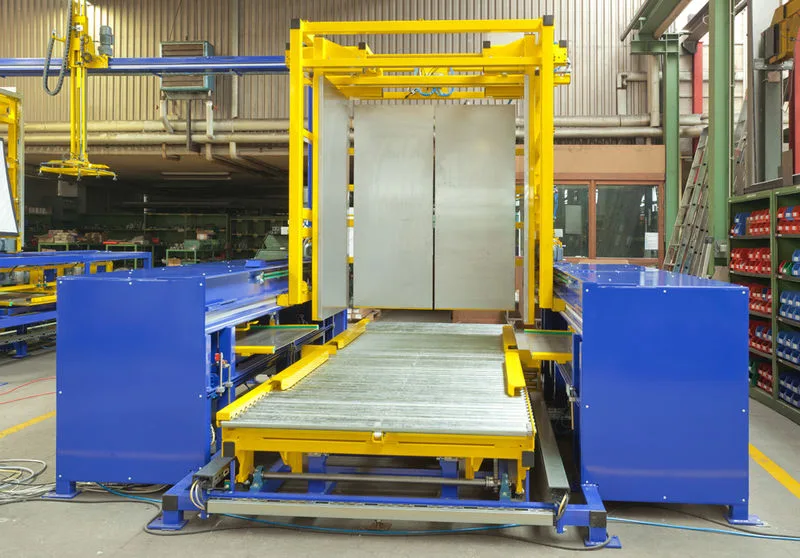
I started my career on the factory floor, working with heavy equipment. Now, as the owner of SHJLPACK, I design and build machines that solve these exact problems. It is not just about buying a new piece of equipment. It is about understanding how it solves real, deep problems in your operation. Many factory owners, people like Javier Morales in Mexico who run large steel mills, ask me very specific questions before they invest. They need to see the clear benefits. Let’s look at those questions and find the answers together.
How Does a Mold Flipper Drastically Improve Workshop Safety?
Are you always worried about the "close calls" when your team flips heavy molds with cranes? I know that feeling. The risk of a dropped load or a serious injury is a constant stress for any manager or owner. It is a weight on your shoulders. What if you could almost completely remove that risk? What if you could create a process that is safe every single time? This is not just a dream; it is possible with the right equipment.
A mold flipper improves workshop safety by creating a stable, controlled, and automated way to turn molds. The machine holds the mold securely and turns it smoothly. This simple change removes workers from the most dangerous part of the job. It stops uncontrolled movements and ends the need for difficult and high-risk crane operations. Safety becomes part of the system, not something you just hope for.
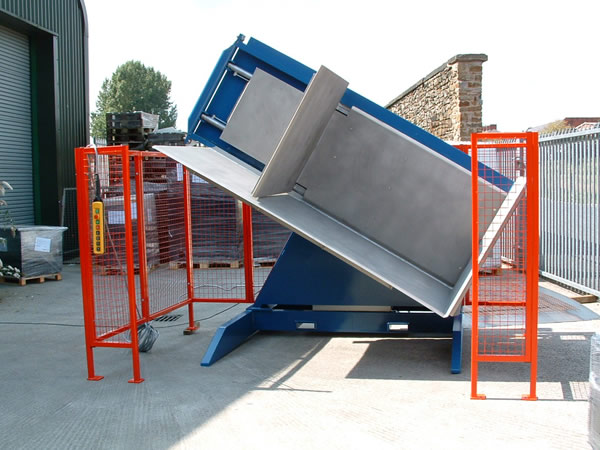
The Dangers of Traditional Mold Flipping
In my early days, I saw how we used to flip molds. It was a tense process. We would use an overhead crane, heavy chains, and a lot of manual pushing and pulling. Several people had to work together perfectly. One small mistake could lead to a disaster. The biggest risk was human error. A misplaced chain, a sudden crane movement, or a worker standing in the wrong place could lead to a dropped mold. These molds weigh thousands of kilograms. A dropped mold means more than just a damaged asset; it’s a life-threatening event. We also had to deal with pinch points, where a worker's hand or body could get crushed between the mold and another surface. This old method is a relic from a time when we didn't have better options. Today, relying on it is an unnecessary risk.
A Controlled, Mechanical Solution
A mold flipper changes the entire process. It is a purpose-built machine designed for one job: turning heavy objects safely. The mold is placed on a solid platform and clamped in place. The machine does all the work. It uses powerful hydraulics or electric motors to provide a smooth, steady rotation of 90 or 180 degrees. The operator stands at a control panel, far away from the moving parts. There is no manual pushing, no unstable rigging, and no chance of the mold slipping. The entire operation is controlled and predictable. This is the difference between hoping for safety and engineering it into your workflow. It addresses the challenge of aging equipment by replacing a risky, manual process with a reliable, automated one.
Compliance and Insurance Benefits
Factory owners like Javier face increasing pressure from governments to meet strict safety standards. Using a mold flipper shows a clear commitment to worker safety. It helps you comply with regulations like those from OSHA in the United States or similar bodies worldwide. This is not just about avoiding fines. It is about building a culture of safety. Insurance companies also notice these things. When you can show that you have reduced a major risk in your facility, your insurance premiums can often go down. It's a smart financial decision that also protects your people.
| Feature | Traditional Crane Method | Mold Flipper Method |
|---|---|---|
| Primary Risk | Dropped load, crushing injuries, human error | Mechanical failure (very low probability) |
| Personnel Required | 2-4 (crane operator, riggers) | 1 (operator) |
| Required Skill Level | High (certified riggers, experienced operators) | Low (basic machine operation training) |
| Process Time | 30 minutes to 2+ hours | 2-5 minutes |
| Worker Proximity | In the immediate danger zone | At a safe distance from the machine |
| Control | Depends on operator skill and coordination | Fully controlled, predictable mechanical motion |
What is the Real ROI of a Mold Flipper in Terms of Efficiency?
Every minute your production line is stopped for a mold change costs you money. I have seen factories where long, unpredictable changeovers destroy profit margins. They make it impossible to hit production targets. Are you dealing with this? This kind of inefficiency is a quiet problem, but it has a huge impact on your business. The solution is to make the mold change process fast, reliable, and predictable. This is where you find the real financial benefit.
The real return on investment (ROI) of a mold flipper comes from cutting mold changeover time from hours down to just a few minutes. This is not a small improvement. This direct time-saving means your machines are running more and producing more. It gives you higher output and a more flexible production schedule. This directly increases your profit and helps you reach your goals for higher capacity utilization.
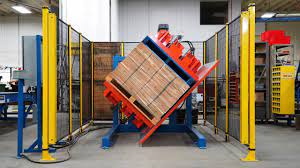
Quantifying Downtime Costs
To understand the ROI, you must first know how much downtime costs you. It is a simple calculation. How much revenue does your machine generate per hour? Or, what is the total operational cost of that machine per hour? Let's say a large press in a steel plant generates $2,000 per hour in value. If a traditional mold change takes 2 hours, that's $4,000 of lost production time. If a mold flipper reduces that change to 15 minutes (0.25 hours), the lost time is now only $500. You have saved $3,500 on a single changeover. If you do this five times a week, that is over $900,000 in recovered production value per year. This is not a small number. It directly attacks the challenge of market demand fluctuations by making your production more agile. When you can switch products faster, you can respond to customer needs more effectively.
The Ripple Effect of Faster Changeovers
The benefit is not just about the time saved on one machine. It spreads through your entire factory. When changeovers are fast, you are no longer afraid to stop the line. This means you can accept smaller, more specialized orders from customers. You can offer more variety. This makes your business much more competitive. It transforms your factory from a place that just produces large batches to an agile facility that can pivot quickly. This directly supports the goal of increasing capacity utilization to 95%. Less time spent on changes means more time making products. I have seen clients completely change their business model after installing this kind of equipment. They could suddenly serve new markets they couldn't reach before.
Reducing Labor Costs and Re-allocating Talent
The old way of changing molds requires several skilled workers. You need a crane operator and at least one or two skilled riggers on the ground. These are valuable people. With a mold flipper, one operator can handle the entire process. This frees up your skilled maintenance staff and riggers. They can stop doing this dangerous, repetitive task and focus on higher-value work. For example, they can work on predictive maintenance programs, one of Javier's key goals. Instead of reacting to problems, they can work on preventing them. This improves overall plant reliability and reduces unexpected breakdowns. You are not just saving labor costs; you are investing your team's talent in a smarter way.
| Metric | Traditional Crane Method | Mold Flipper Method | Annual Impact (Example) |
|---|---|---|---|
| Time per Changeover | 120 minutes | 15 minutes | 105 minutes saved per change |
| Labor per Changeover | 3 people | 1 person | 2 skilled workers freed up |
| Changeovers per Week | 5 | 5 | N/A |
| Weekly Time Saved | 0 minutes (Baseline) | 525 minutes (8.75 hours) | 455 hours saved per year |
| Annual Value (at $2000/hr) | $0 (Baseline) | $910,000 | $910,000 in recovered production |
| Payback Period | N/A | Less than 6 months (typical) | Fast return on investment |
How Does a Mold Flipper Protect Your Most Valuable Assets?
A single, high-precision mold for steel or plastic can cost a lot of money. Sometimes tens of thousands, sometimes hundreds of thousands of dollars. Are you risking this huge investment every time you handle it with chains and a crane? I have seen the damage. An accidental drop or even a small bump can ruin a mold. The repairs are expensive and take a long time. Sometimes, the mold cannot be repaired at all. There must be a safer way to handle these critical and expensive assets.
A mold flipper protects your valuable molds by securing them on a stable platform and using a smooth, controlled turning motion. It is gentle. This prevents the shocks, drops, and collisions that are so common with crane handling. It preserves the mold's delicate surfaces and precise alignment. This extends the life of your mold, avoids expensive repairs, and prevents the production stoppages that come with a damaged tool.
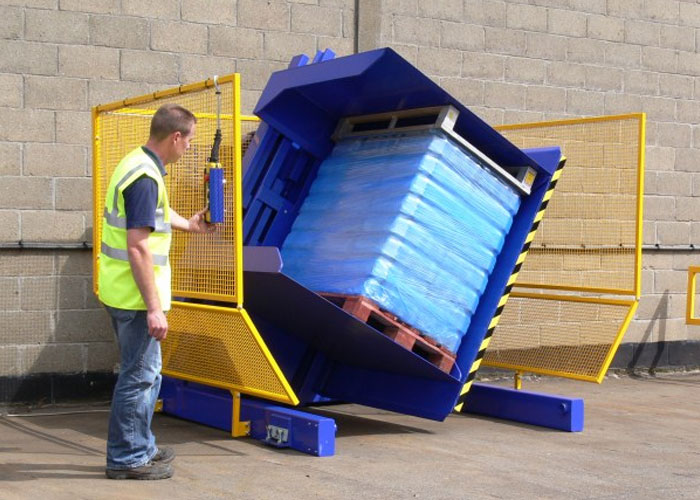
The Hidden Costs of Mold Damage
When a mold is damaged, the cost of the repair is just the beginning. The real cost is much higher. First, there is the lost production while the mold is being fixed. This can be days or even weeks. During that time, a very expensive machine is sitting idle. Then, you have the potential for quality problems. A repaired mold is often not as good as the original. This can lead to scrap parts and customer complaints. Finally, you might have to pay for expedited shipping for replacement parts or the repaired mold, which adds even more cost. When you add all these hidden costs together, the price of one single accident can be enormous. Protecting the mold is one of the smartest financial decisions you can make.
A Story from My Experience
I remember a client I worked with a few years ago. He ran a large stamping plant for the automotive industry, a business very similar in pressure to a steel mill. He was a smart man, much like Javier, always looking at the numbers. But he was hesitant to invest in a mold flipper. One day, his team was changing a critical die for a major client. A chain slipped. The die, worth over $150,000, fell a short distance, but it was enough. The damage was severe. The repair cost was $80,000. But the real pain was the penalty clause from his automotive client for the delayed shipment. That penalty was over $100,000. That single incident cost him more than the price of two mold flippers. He called me the next week and ordered one. He learned a hard lesson that day: the cost of the right equipment is always less than the cost of a single major failure.
Preserving Precision and Alignment
Modern molds are miracles of engineering. They have incredibly tight tolerances, sometimes measured in microns. The two halves must align perfectly to produce a good part. A sudden jolt or impact from a crane can easily knock these delicate components out of alignment. Even if there is no visible damage, a misaligned mold will produce bad parts. You will waste material, time, and energy trying to figure out what is wrong. A mold flipper's gentle, controlled motion eliminates this risk. It handles the mold with the care it requires, preserving its precision and ensuring it is ready to produce perfect parts as soon as it is back in the machine. This commitment to quality is what separates good companies from great ones.
| Risk Factor | Traditional Crane Method | Mold Flipper Method |
|---|---|---|
| Risk of Catastrophic Drop | Moderate to High | Extremely Low |
| Risk of Impact/Bump | High | Very Low |
| Risk of Misalignment | High | Very Low |
| Typical Repair Cost | High ($10,000 - $100,000+) | N/A |
| Impact on Production | Major Stoppage (Days/Weeks) | Minimal to None |
| Mold Lifespan | Reduced due to stress and impacts | Maximized through gentle handling |
Can a Mold Flipper Be Integrated into a Modern, Digitized Workflow?
You are likely investing a lot of money into making your factory "smart." I see it everywhere. Companies are adding MES systems, IoT sensors, and data analytics to see and control everything. But what about the physical, mechanical work? Do old machines create a blockage in your new digital system? This disconnect between the digital plan and the physical action can weaken your entire strategy. The solution is to make sure your heavy equipment can talk to your digital systems.
Yes, a modern mold flipper can be fully integrated into a digitized workflow. These are not the simple machines of the past. Today's flippers can have advanced PLC controls that communicate with your factory's MES or ERP system. They can be part of a fully automated cell with AGVs or robotic cranes. A mold flipper can become a key data point and an automated step in your smart factory, helping you achieve your goal of total production visualization.
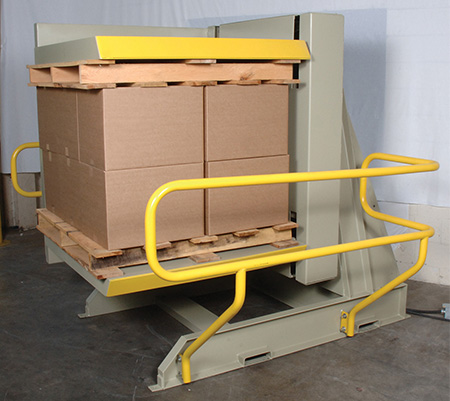
From Standalone Machine to Integrated System
A basic, standalone mold flipper is already a huge improvement for safety and efficiency. But a modern machine is built for connection. The brain of the machine is a PLC (Programmable Logic Controller). This PLC can be programmed to do more than just turn the mold. It can send and receive signals. For example, when a mold change is needed, your MES (Manufacturing Execution System) can send a signal to the flipper to be ready. After the flipper completes its turn, it sends a signal back to the MES. This simple communication creates a seamless link between the digital schedule and the physical work on the floor. It eliminates manual data entry and reduces the chance of human error, which is key to running a lean, efficient operation.
Connecting to Your MES/ERP
This connection is critical for achieving the kind of goals that leaders like Javier have. When the mold flipper tells the MES that the "flip is complete," the MES can automatically trigger the next step in the work order. It might signal a forklift driver or an AGV that the mold is ready for transport. It updates the production schedule in real-time. Everyone in the plant, from the floor manager to the CEO, can see the exact status of the mold change on their dashboard. This real-time data is essential for smart scheduling and predictive analytics. You can accurately track changeover times, identify delays, and continuously improve your process. This is the heart of a truly digital factory.
The Future: Automation and AGVs
The next step is full automation. Imagine this: your MES signals that a mold change is needed. An AGV (Automated Guided Vehicle) drives to the mold storage area, picks up the new mold, and delivers it to the mold flipper. The AGV communicates with the flipper, which automatically clamps and turns the mold. The flipper then signals the AGV that the job is done. The AGV picks up the prepared mold and delivers it directly to the press. No human hands touch the mold during the entire process. This is not science fiction; we at SHJLPACK are working on systems like this today. This level of automation drastically reduces labor costs, eliminates safety risks, and allows for 24/7 operation. It is the ultimate goal for any factory owner looking to lower operating costs and increase efficiency.
| Integration Level | Description | Key Benefits |
|---|---|---|
| Level 1: Standalone | Manually operated with push buttons. No external communication. | Basic safety and efficiency gains. |
| Level 2: PLC Control | Onboard PLC for automated cycles. Diagnostic feedback on a screen. | Increased reliability, consistent cycle times, easier troubleshooting. |
| Level 3: MES Integrated | PLC communicates with factory MES/ERP. Sends/receives signals. | Real-time status tracking, data for KPIs, streamlined workflow. |
| Level 4: Fully Automated | Integrated with AGVs/robotics. Part of an automated work cell. | "Lights-out" operation, maximum efficiency, lowest labor cost. |
Conclusion
A mold flipper is not a luxury. It is a strategic investment in safety, efficiency, and asset protection. It is foundational equipment for any modern and competitive manufacturing facility.




